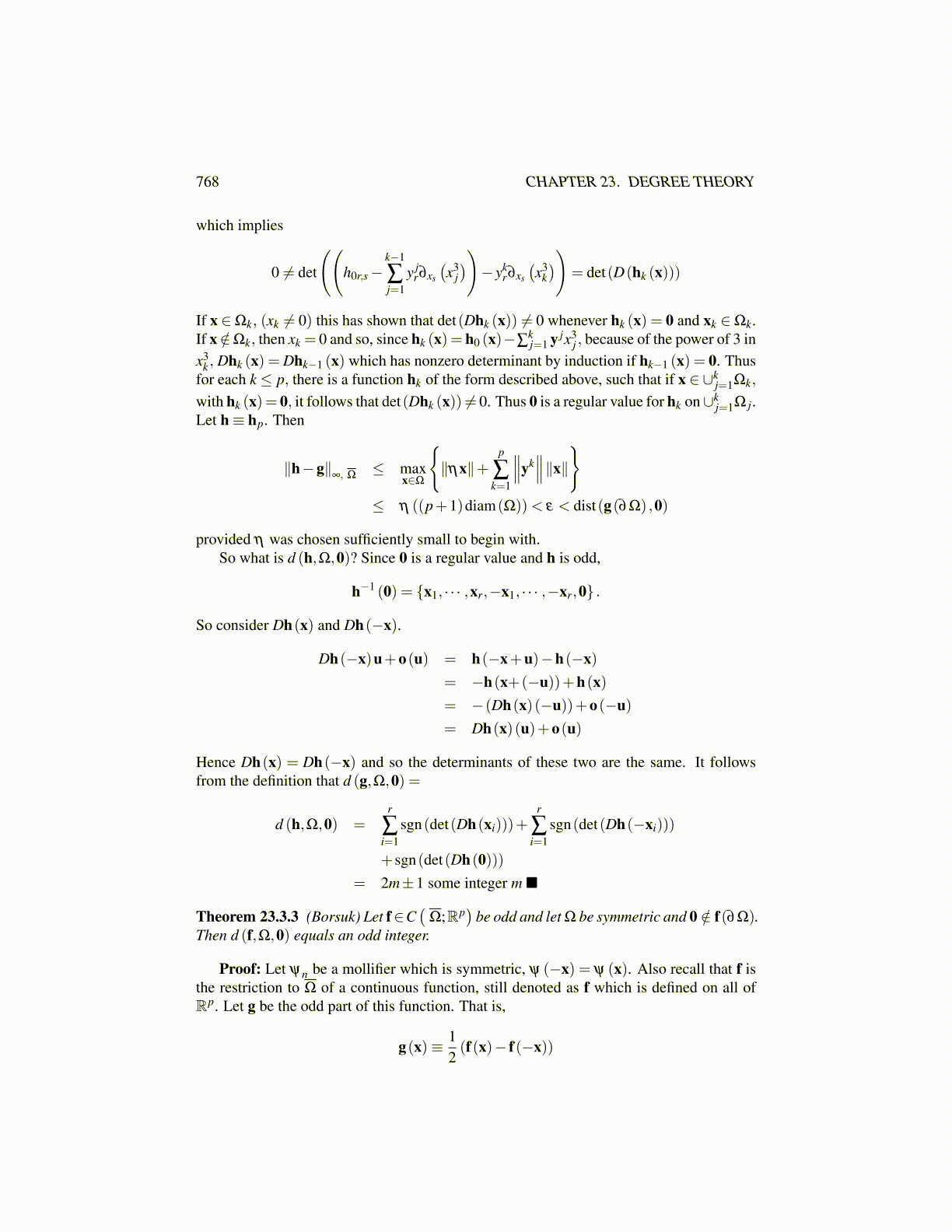
768 CHAPTER 23. DEGREE THEORY
which implies
0 ̸= det
((h0r,s−
k−1
∑j=1
y jr∂xs
(x3
j))− yk
r∂xs
(x3
k))
= det(D(hk (x)))
If x ∈Ωk, (xk ̸= 0) this has shown that det(Dhk (x)) ̸= 0 whenever hk (x) = 0 and xk ∈Ωk.If x /∈Ωk, then xk = 0 and so, since hk (x) = h0 (x)−∑
kj=1 y jx3
j , because of the power of 3 inx3
k , Dhk (x) = Dhk−1 (x) which has nonzero determinant by induction if hk−1 (x) = 0. Thusfor each k≤ p, there is a function hk of the form described above, such that if x ∈ ∪k
j=1Ωk,
with hk (x)= 0, it follows that det(Dhk (x)) ̸= 0. Thus 0 is a regular value for hk on∪kj=1Ω j.
Let h≡ hp. Then
∥h−g∥∞, Ω
≤ maxx∈Ω
{∥ηx∥+
p
∑k=1
∥∥∥yk∥∥∥∥x∥}
≤ η ((p+1)diam(Ω))< ε < dist(g(∂Ω) ,0)
provided η was chosen sufficiently small to begin with.So what is d (h,Ω,0)? Since 0 is a regular value and h is odd,
h−1 (0) = {x1, · · · ,xr,−x1, · · · ,−xr,0} .
So consider Dh(x) and Dh(−x).
Dh(−x)u+o(u) = h(−x+u)−h(−x)= −h(x+(−u))+h(x)= −(Dh(x)(−u))+o(−u)= Dh(x)(u)+o(u)
Hence Dh(x) = Dh(−x) and so the determinants of these two are the same. It followsfrom the definition that d (g,Ω,0) =
d (h,Ω,0) =r
∑i=1
sgn(det(Dh(xi)))+r
∑i=1
sgn(det(Dh(−xi)))
+sgn(det(Dh(0)))= 2m±1 some integer m
Theorem 23.3.3 (Borsuk) Let f ∈C(
Ω;Rp)
be odd and let Ω be symmetric. Assume alsothat 0 /∈ f(∂Ω). Then d (f,Ω,0) equals an odd integer.
Proof: Let ψn be a mollifier which is symmetric, ψ (−x) = ψ (x). Also recall that f isthe restriction to Ω of a continuous function, still denoted as f which is defined on all ofRp. Let g be the odd part of this function. That is,
g(x)≡ 12(f(x)− f(−x))